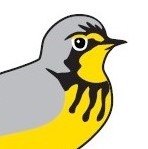By Pete Davidson, Senior Advisor, Bird Studies Canada

Hudsonian Godwits Photo: Alan Schmierer
In late April, as billions of migratory birds returned to their northern breeding grounds from southern and equatorial winter quarters, an unprecedented gathering took place. A group of people passionate about the plight of the birds along their ancient flyways assembled at a migratory bottleneck on the Arabian Gulf.
A Summit for the Flyways convened representatives of more than 100 organizations, businesses, and governments from 70 countries worldwide. To launch the summit, BirdLife International released the State of the World’s Birds 2018.
This latest snapshot, taking the pulse of the planet based on what birds tell us, has two main messages. There is the bad, if predictable, news that even more species are in trouble than was the case just four years ago. But there is good, inspiring news too: more and more examples are emerging of species being saved from decline and extinction. Conservation solutions are working, but many more are urgently required to make a meaningful impact on the global biodiversity crisis.
The challenge for the summit participants was to take these lessons learned, and develop a coordinated response focused on major threat themes impacting migratory birds at the scale of flyways. What was different about this gathering was the level of ambition, and the open dialogue transcending cultures and sectors, focused on working together more effectively around shared values. For example, renewable energy business leaders, multi-lateral environmental agreement executives, and cutting-edge scientists openly debated how to do a bigger and better job of reducing biodiversity impacts of powerlines and wind energy development.
One area of particular interest to Canada and the flyways of the Americas is the dialogue on conserving networks of coastal sites at the flyway scale. An inspiration to us all comes from China, where coastal habitat loss is the driver of near-extinction for several shorebirds. Under the Xi Xingping vision of “ecological civilization,” and with international and scientific support, one of China’s first policy moves has been to ban reclamation of any more coastal land, and to restore and protect remaining coastal habitat. Reflecting the need for more global leadership of this type, a recommendation coming out of the summit is for a single, global “Caring for Coasts” forum mandated by the United Nations Conventions on Wetlands (Ramsar), Biological Diversity, and Migratory Species, to boost policy and legal support to efforts like the Atlantic Flyway Shorebird Initiative, and nature-based, climate resilient solutions for coastal habitats, like the initiative Bird Studies Canada is engaged in for the Fraser Delta.
Fundraising for the vital work ahead remains a huge challenge. The flyways summit addressed this by convening major conservation donors to explore how donor alliances can more effectively leverage each other’s efforts and attract new investments to increase conservation impact. On this theme, BirdLife International, Bird Studies Canada, and our Friends Across the Flyway partners continue to increase the international coordination of our site-based work. Please visit Bird Studies Canada’s Friends Across the Flyway page and consider supporting our work to conserve Piping Plovers and other migratory shorebirds. You can learn more about projects by our partners along the Atlantic Flyway such as Aves Argentinas, SAVE Brasil, Asociacion Calidris, Bahamas Nature Trust, Manomet, and Massachussetts Audubon by visiting the BirdLife website.
Another key message from businesses and governments at the summit was the importance of early integration of science into industry standards and policy processes. We’re looking forward to applying that advice and advancing the policy agenda on coasts with the latest science from symposia like “The Loss of Tidal Wetlands Worldwide” at the International Ornithological Congress, happening in Vancouver this August.
The Global Summit for the Flyways was convened by BirdLife International in association with the MAVA Foundation, the Ornithological Society of the Middle East (OSME), and United Nations Environment Program and Convention on Migratory Species, among others. It was hosted by the International Fund for Houbara Conservation in Abu Dhabi, the United Arab Emirates.
To learn more about the outcomes of the summit and the conservation priorities that were identified, check out the official declaration issued by BirdLife International.

